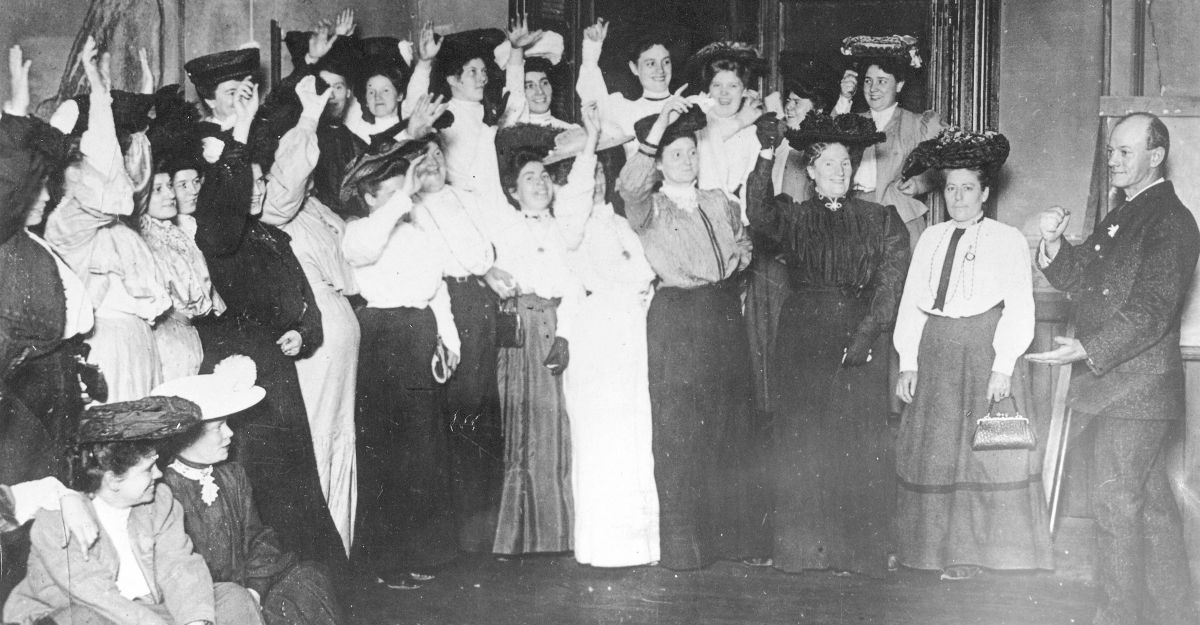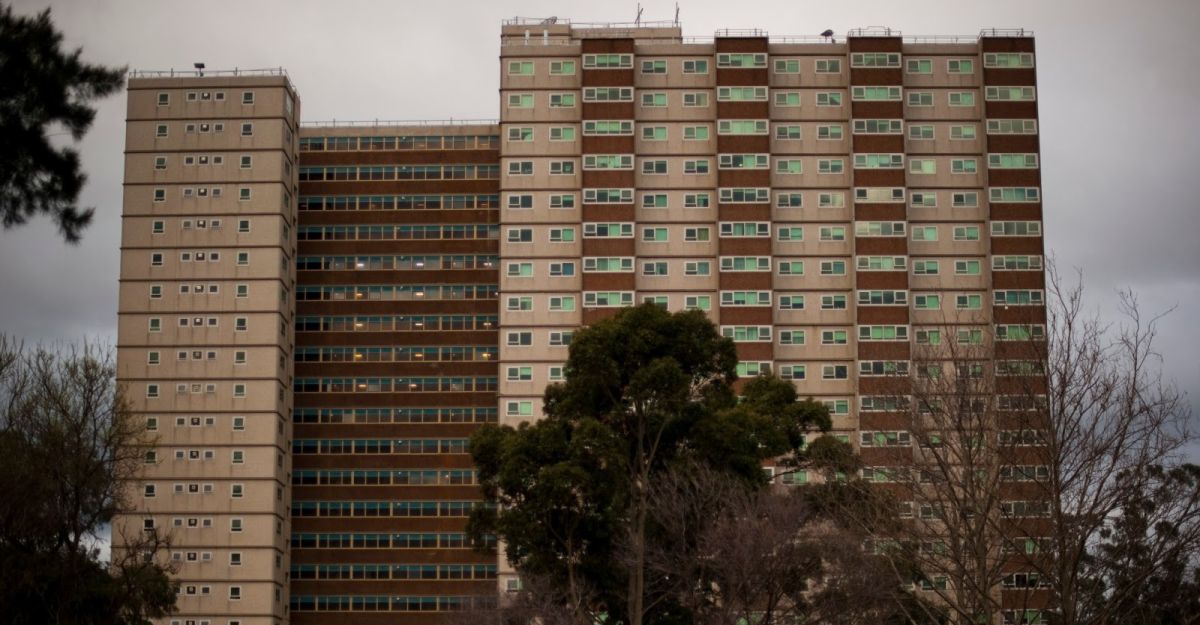As climate-induced floods hit both sides of the Tasman with grim frequency, an article about class feels almost frivolous. Yet to separate climate from class is to create a false binary. From cause to aftermath, class is embedded in every climate emergency, just as relations between people, as argued by Jason W Moore, ‘are always bundled with the rest of nature, flowing inside, outside, and through human bodies and histories.’ If we want to make sense of these moments of capital’s vortex, an understanding of class is more urgent than ever.
In Aotearoa New Zealand, where I live and work, past historians have asked whether we ‘have or have had a bourgeoisie and a proletariat, and a struggle between the two.’ That such a question could ever (and continue to) be asked is due to a misunderstanding of what class is. So much of New Zealand’s historiography is plagued by a sociological approach to class. This approach is based on stratification and the need to confine people into categories: hence the focus on occupation, hierarchy, status, income differentials, social role, class location or class consciousness. Who is working class? Where does the middle class start and stop? Who were the gentry? Was there a gentry?
Such an approach isn’t limited to liberal scholarship. Orthodox Marxism has been equally flawed, leading to valid critiques of class reductionism that allow scholars to write off Marxism as a critical methodology and mode of analysis. We are all poorer as a result. Not only does this approach limit potential lines of historical inquiry, but it also makes for bad politics. An understanding of class and its imbrication with the differentiated-yet-unified relations of capital is more urgent than ever.
In his 2004 article ‘Class in Colonial New Zealand: Towards a Historiographical Rehabilitation’, Jim McAloon summarised the treatment of class in the historiography of nineteenth century New Zealand. Apart from some notable exceptions, ‘most discussions approached class almost entirely in terms of class consciousness,’ he writes, ‘and emphasised the working class from 1890.’ For McAloon, ‘there is more to class than consciousness’ and ‘static portrayals which assume or imply a neat and fully-formed class structure that in turn gives rise to tidy and coherent expressions of consciousness’ are unsatisfactory. Highlighting approaches to class by Marxists such as Nicos Poulantzas, Erik Olen Wright, EP Thompson and Derek Sayer, in contradistinction to a sample of work by historians of nineteenth-century New Zealand, McAloon convincingly shows how local approaches to class were mostly couched in terms of consciousness.
Class-as-consciousness is evident in Jock Phillips’ entry on class in Te Ara, the Encyclopaedia of New Zealand. Here we find a typical stratification approach to class, as well as a conflation of Marxist class analysis with Marx’s notion of class ‘in itself’ and ‘for itself’—something Marx himself never fully developed. According to Phillips, ‘classes are major social groupings composed of people with similar levels of economic resources, property and status. They are traditionally defined as working class, middle class and upper class.’ Through his misreading of Marx and his focus on stratification and categorisation, Phillips denies the usefulness of a Marxist class analysis, arguing that New Zealand had ‘several categories of worker who sat uncomfortably between Marx’s bourgeoisie and working class.’ In his view, a Marxist approach to class in New Zealand cannot explain ‘major markers of social difference’ such as gender or the colonial relation, which ‘confuse class analysis.’
Phillips is right—if we take an orthodox Marxist/sociological approach to class. While such an approach might work on the level of surface appearances or for academia, it tells us little about lived social relations and the qualitative antagonisms within them. Not everyone can fit into a box (let alone stay there over time and across different situations and contexts). Focused on fitting individuals into catch-all groups and an impoverished conceptual schema, these approaches resort to more and more ‘boxes’ to make sense of the many ways capital structures our lives, and are ultimately guilty of reductionism.
Richard Gunn made this point in his essay ‘Notes on Class’ (1987). Grounded in the Open Marxist milieu, his analysis lays out the ‘Marxist Marxist’ approach to class. This and other similar explorations have informed my own historical practice and how I understand class. Viewing class as a relationship and process that takes place in historical time and specific contexts offers historians of nineteenth-century New Zealand (and present-day movements, for that matter) a fruitful analysis—one rooted in the exploration of antagonism, exploitation and power in its many forms.
‘It is much easier to say what, according to Marxism, class is not than to say what class is,’ writes Gunn. ‘A class is not a group of individuals, specified by what they have in common (their income level or life-style, their ‘source of revenue’, their relation to the means of production, etc.).’ Class, like capital itself, is a social relation:
That which is a relation cannot be a group, even a relationally specified group; nor can it be a position or place (a relationally specified place) in which a group may be constituted, or may stand. Setting aside such views, we can say that class is the relation itself (for example, the capital-labour relation) and, more specifically, a relation of struggle. The terms ‘class’ and ‘class relation’ are interchangeable, and ‘a’ class is a class-relation of some historically particular kind.
For Gunn, classes are not pre-given entities that enter into struggle, but rather class struggle is the fundamental premise of class. As such, class struggle can take many forms, because ‘the class relation (say, the capital-labour relation)’ can structure ‘the lives of different individuals in different ways.’ A focus on class as a relation ‘allows the line of class division to fall through, and not merely between, the individuals concerned,’ avoiding reductionism and bringing ‘the experiential richness of individuals’ (self-)contradictory life-texture into full theoretical and phenomenological light.’
When class is understood ‘in its authentically Marxist sense’—as a social relation of struggle, mediated by different yet internally-contained relations such as gender and race—the charge of reductionism is misplaced. In fact, it is sociologists and orthodox Marxists that want to ‘situate each individual, unequivocally and without remainder, in one or other of the specified groups or places’—the ‘pure’ capitalist or proletariat. The proliferation of ‘middle classes, middle strata, new petty bourgeoisie etc. is to find some pigeon-hole to which each individual may be unequivocally assigned.’ The ways in which individuals are divided in and against themselves enters theoretical eclipse. Instead, class as a relation of struggle means that ‘all aspects of individual existence—and not for example merely the economic aspect—are class-relevant and class concerned.’ This conception of class (‘the point of view of totality’) rejects ‘the narrowness of the conception of politics which the sociological conception of class entails.’
Gunn’s ‘Notes’ echoes Ellen Meiksins Wood’s exploration of class in the work of EP Thompson. First in her 1983 article ‘The Politics of Theory and the Concept of Class,’ later reworked as two chapters in her 1995 book Democracy Against Capitalism, Wood shows how Thompson placed class struggle at the centre of his theory and historical practice, how class struggle precedes class, and how class is a relationship and a process. Wood also took aim at sociological definitions of class and how stratification renders class invisible. ‘Where is the dividing line between classes in a continuum of inequality?’ she asks. ‘Where is the qualitative break in a structure of stratification?’
David Camfield expands on class as a relationship and process in his article, ‘Re-Orienting Class Analysis: Working Classes as Historical Formations’. The sociology of class has led to ‘unproductive debates about where to place particular occupations and where to draw boundaries between classes.’ In turn, the rich totality of social relations and their antagonisms are lost. That’s because class exists as a social activity between people, rather than as a ‘thing’, a ‘structure’ or a ‘location’. As Thompson himself wrote in ‘The Peculiarities of the English’:
Sociologists who have stopped the time-machine and, with a good deal of conceptual huffing and puffing, have gone down to the engine-room to look, tell us that nowhere at all have they been able to locate and classify a class… of course they are right, since class is not this or that part of the machine, but the way the machine works once it is set I motion… Class is a social and cultural formation (often finding institutional expression) which cannot be defined abstractly, or in isolation, but only in terms of relationships.
Following Raewyn Connell, James Messerschmidt has explored gender, race and class as internal relations that mutually constitute one another. These are expressed in social interaction: in other words, as a practice between people. For Messerschmidt, we ‘do’ gender, race and class in situational ways. Class is not a thing but an activity, a verb rather than a noun. ‘The capacity to exercise power is, for the most part, a reflection of one’s position in social relationships.’
It’s in this sense that workers of different stripes can share affinities, sympathies—class consciousness, even—but the capital-labour relation means we can find ourselves with opposing or differing interests in class situations. Consider the case of a low-paid, overworked gaol warder charged with guarding the hard labour gang; a farmhand who puts out the burning haystack while his fellow worker watches on, match in hand; a salt-of-the-earth union leader sending strikers back to work; a Pasifika scholar-cum-Vice Chancellor laying off hundreds of staff. Class relations of struggle can be understood as both situational and as a spectrum with opposing poles. Where someone lands on this spectrum depends on the specific context and the wider relations of power at play. However, their class ‘location’ is less important than the relation itself.
This approach to class has shaped my recent work on prison labour, and especially The History of a Riot, my research into the revolt of emigrant labourers and their wives in 1840s Nelson. Understanding their struggle against the New Zealand Company (and at times, against each other) was based on viewing class as a relationship and a process, mediated through other social relations such as gender, sexuality and race. Counter to intersectionality (which suggests separate systems of exploitation and oppression intersecting), I wrote that it is more useful to treat social relations such as gender, race and class as a unity of lived experience: as a totality. As Joshua Clover and Nikhil Singh argue, ‘it is trivial unto meaninglessness to treat one without the other.’
This does not mean collapsing gender or colonial relations into class but seeing them as co-constitutive. Class is never only about class, writes Camfield. Class presupposes gender just as gender presupposes class. The colonial relation based on dispossession of Indigenous land is at the same time imbricated in the ongoing separation of labour from its means in order to reproduce the wage relation. This is why Silvia Federici can write of the patriarchy of the wage, Nancy Fraser on the three faces of labour, Cedric Robinson on racial capitalism, and Jason W Moore on capitalism as an ecological regime.
To return to the question of whether New Zealanders (but the same could be said of Australians) ‘have or have had a bourgeoisie and a proletariat, and a struggle between the two’, the answer is clearly yes, but not in the way historians such as Phillips suggest. Understanding class as a social relationship begs a different set of questions—including the question I raised in The History of a Riot. How did class composition and class conflict, both overt and covert, play out in other colonising contexts? An understanding of class as a relationship and a process, and the expanded terrain of class struggle that comes with it, has the potential to unearth or reappraise key events and narratives in our colonial pasts.
Image: Diego Rivera, Detroit Industry murals (north wall)



